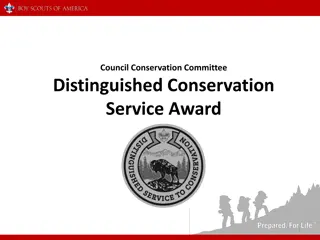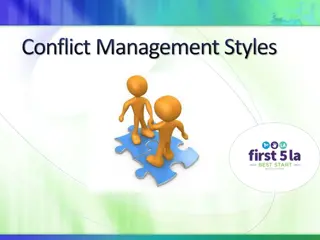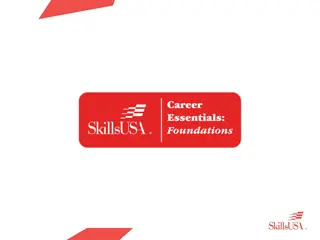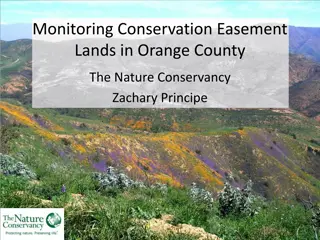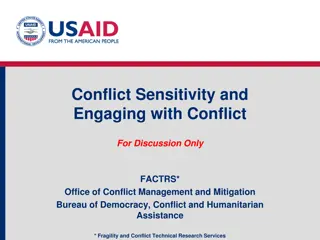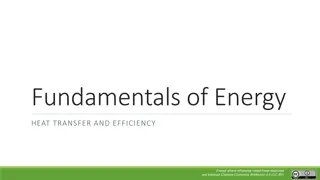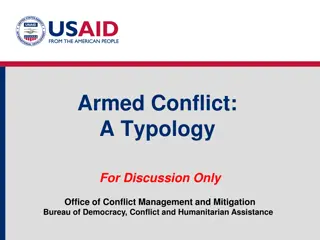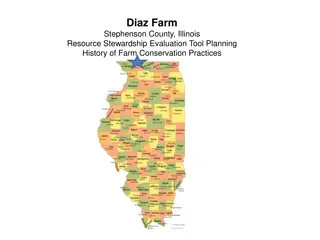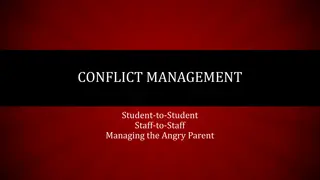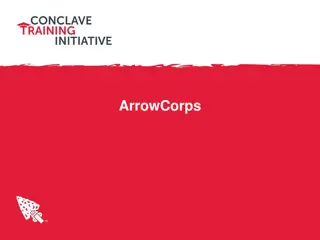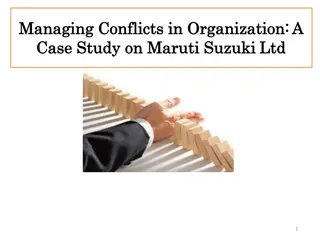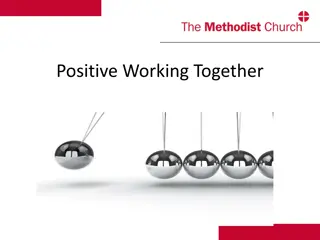Exploring Conflict Management in Conservation Settings
Delve into conflict management objectives, activities, and understanding the nature of conflict in conservation. Dive deep into types of conflict, factors causing conflicts, and the importance of effective communication. Explore the tools for conflict analysis and reflection to promote resolution and positive change in conservation efforts.
Download Presentation

Please find below an Image/Link to download the presentation.
The content on the website is provided AS IS for your information and personal use only. It may not be sold, licensed, or shared on other websites without obtaining consent from the author. Download presentation by click this link. If you encounter any issues during the download, it is possible that the publisher has removed the file from their server.
E N D
Presentation Transcript
Conflict Management: Objectives To experience a conflictual situation in a safe environment and reflect on the feelings that arise, causes of conflict and the importance of communication To explore the types of conflict that arise when the behaviours and/or goals of different stakeholders are incompatible To share experiences of the common categories of conflict in conservation To increase knowledge of conflict analysis tools
Activity: Conflict Management Divide into 3 similar sized groups Read the instructions for your group but don t share! Reflection: QHow did you feel during this activity? QWas there an obvious leader or mediator? What did this person do? QWas the atmosphere competitive or cooperative? QDid you compromise? At what point did you start to compromise? How might you have compromised? QWhat does this exercise tell us about the potential for conflict over (limited) resources?
What is Conflict? Conflict is a relationship between two or more parties (individuals or groups) who have, or think they have, incompatible goals and act on the basis of these perceived incompatibilities Conflict is a fact of life, but becomes problematic when it is violent It is often an expression of change It needs to be acknowledged, understood and transformed where possible into a force for positive change
Figure: Types of conflict Compatible goals Incompatible goals Compatible behaviour No conflict Latent conflict Incompatible behaviour Surface conflict Open conflict
Activity: Types of Conflict In small groups, discuss examples from your own experience or knowledge of the different types of conflict (latent, surface, open). Take 1 or 2 examples and analyse: Who was involved (stakeholders)? What were the sources of conflict? Were there any particular triggers that shifted latent conflict into open conflict .. or transformed surface or open conflict into no or latent conflict? Be prepared to present back to plenary after 15 mins
Conflict analysis QWhat tools did you use (or could you have used) to analyse the context of the examples you discussed? i.e. how did you identify the stakeholders, sources, triggers, appropriate strategies etc? Use of participatory methods help ensure the full range of perspectives of different stakeholders can be discussed and analysed.
Positions, Interests, Needs (PINs) Positions - tangible things stakeholders say they want; public statements about the situation. Interests - things stakeholders want; underlying motivations that lead stakeholders to take a particular position. Needs goals pursued by stakeholders in order to survive. May be subjective i.e. perceived needs. Stakeholder 1 Stakeholder 2 Positions Interests Needs Areas of mutual interests/needs
Activity: PINs In pairs, you will be given 2 character cards from the fruit sharing exercise. Discuss the different positions, interests and needs of your 2 characters Try to identify areas of mutual interest Illustrate using the PINs diagram
Reflection: PINs QHow useful did you find it to distinguish between positions and interests? QTo what extent do you think it would be useful to use this tool in a real situation with stakeholders in a (potential) conflict situation?





